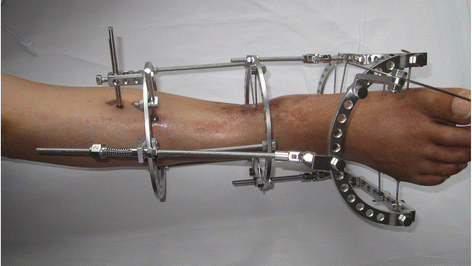
Medical Innovation is always advancing. With a many decade strong history, the orthopaedic surgical realm is celebrating over 250 years of helping to improve the lives of people. With a broad spectrum of focuses in the field, the baseline underlying principles of focusing on technological and biological improvements to facilitate both internal and external treatments, the quality of the medical output that is generated is increasing with time.
In orthopaedic treatments, procedures such as arthroscopic surgeries have facilitated healing in ways that were previously not possible. With orthopaedic surgery continuously improving in terms of treatments with time, many of the modern techniques are actually being optimized. Once thing that we must remember is that what is now utilized across the field, was once in the process of initial skepticism until it proved itself. With many orthopaedic conditions now treatable via surgical, non-surgical and even minimally invasive procedures, the healing of musculoskeletal disease is now possible more than ever. One such technology is the utilization of Distraction Arthroplasty in order to heal joints for arthritic pain.
What is Ankle Distraction Arthroplasty?
Ankle Distraction Arthroplasty is a procedure that is utilized to treat arthritis in the ankle in a way that allows the joint to heal naturally. The variation in ankle arthritis is expansive from minor conditions to debilitating conditions where patients cannot walk. Not all arthritis sufferers are the same!. The differing stages of arthritis are:
Stage 0 – Normal
Stage 1 – Minor
Stage 2 – Mild
Stage 3 – Moderate
Stage 4- Severe
The symptoms list can be numerous! The nature of arthritis is that it is very prevalent. The ankle is a hinge, and is susceptible to wear and tear if the appropriate rotations and shears are applied to the area via activities such as sports, or via internal conditions such as diabetes which induce neuropathy. The symptoms of arthritis are similar to other ankle conditions, so consult with your foot and ankle surgeon in order to determine what the root cause of your ankle pain is!
What does Ankle Distraction Arthroplasty focus on?
Ankle Distraction Arthroplasty focuses on restoring the joint. Usually during arthritis, there is a degradation of the cartilage in the joint, which affects the ability of the patient to use the joint properly. With distraction arthroplasty, the patient is provided with a mechanical scaffold, that cradles the leg. It also facilitates the transfer of weight from the feet to the scaffold, relieves the joint, and allows natural healing of the cartilage to take place. In terms of the outcomes…the results are positive, with ankle motion preserved, and increased mobility being facilitated after the 10 to 12 weeks of wearing the frame, and then facilitating final healing.
Your foot and ankle surgeon, will assess you and determine if distraction arthroplasty or other minimally invasive procedures will be ideal for your arthritis. At the time of writing, distraction arthroplasty is gaining widespread acceptance across the orthopaedic field, so feel free to enquire about it if you feel that your arthritis is severe enough. There are several athletes who have used the procedure to heal themselves, and have returned to activities after the treatment.
How does the Distraction Arthroplasty Procedure Work?
Arthritis as a condition, involves the degradation of the articular cartilage that facilitates smooth joint operation. When your orthopaedic surgeon assesses your X-rays there will be cartilage loss that can easily be seen. As the joint stiffens, the patient will feel pain which affects their mobility. Since the joints are constantly in motion, healing is always slower than anticipated. By utilizing distraction arthroplasty, the body will be allowed to naturally heal itself. The procedure serves to release the joint contact, and the interbone spaces where the cartilage occupies is allowed to regenerate as there is renewed blood circulation to the area. What circulation does is facilitate healing.
How does the procedure work?
The distraction arthroplasty procedure is categorized as minimally invasive. A frame is erected around the joint to be treated. Via a configuration of rings, plates, hinges and screws as you’ll be able to see outlined in the image above, the ankle and leg are gently cradled. The application is executed surgically, and the removal is accomplished in a similar way. During surgery, if there are any additional joint adjustments to be made, they will be facilitated by your surgeon. If there are any bone spurs due to the joints rubbing together, they will be removed. Additionally, techniques to facilitate cartilage repair will be facilitated by your orthopaedic surgeon.
Post Operative Care
The Distraction Arthroplasty process takes about two days. The first day is to facilitate the surgery, and the second day is to ensure that the patient can confidently manage to operate with the frame. A physical therapy session is usually prescribed, after which, the patient is discharged and allowed to return to their home life to heal. The frame is worn by the patient for ten weeks. They will be allowed to participate in regular hygiene activities such as showers, and also swim in pools. Careful treatment of the area where the skin is penetrated by the frame is also prescribed by the orthopaedic surgeon.
Consult with your orthopaedic surgeon, if you believe that distraction arthroplasty will help to heal your arthritis.
Reference:
https://www.hss.edu/conditions_ankle-distraction-arthroplasty.asp


